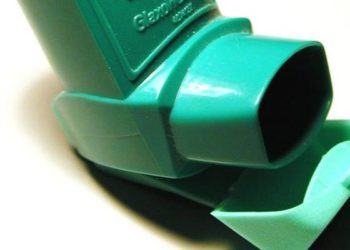Mass shootings associated with large increases in handgun acquisitions in the following 6 weeks
1. After the mass shootings in Newtown, Connecticut (2012) and San Bernardino, California (2015), there were spikes in handgun acquisitions in the following 6 weeks, but the increases were brief and comprised <10% of yearly handgun acquisitions in the state.
2. Additional research is needed to assess if repeated spikes following mass shootings could result in considerable increases in firearm ownership prevalence and what implications they could have for public health, especially considering that owning a firearm is a risk factor for firearm-related suicide and homicide.
Evidence Rating Level: 3 (Average)
Study Rundown: In the United States, gunshot wounds result in the deaths of over 32,000 people every year. Less than 1% of these deaths are caused by mass shootings, but these events can result in the general population having a heightened awareness of gun violence. In this manner, mass shootings can increase firearm sales due to increased worry about personal protection or concern about the government potentially reacting to these shootings by making firearms harder to obtain. News stories as well as two studies have stated that firearm sales have sharply risen following several mass shootings. However, the nature and magnitude of these increases remain poorly described. The authors used individual-level information to analyze handgun acquisition patterns in California following mass shootings in Newtown, Connecticut (2012) and San Bernardino, California (2015). This study found that there were spikes in handgun acquisitions in the 6 weeks following these two mass shootings, but the increases were brief and comprised <10% of yearly handgun acquisitions in the state. The authors expressed concern that these findings suggest there could be negative implications for public health over time, especially considering that owning a firearm is a risk factor for firearm-related suicide and homicide.
A strength of the study is that it provides the first detailed description of purchasing behavior for firearms shortly after a mass shooting. Limitations of the study include focus on a single firearm type in a single state and the inability for the statistical analysis to establish causality.
Click to read the study, published in Annals of Internal Medicine
Click to read an accompanying editorial in Annals of Internal Medicine
Relevant Reading: Responding to violence with guns: Mass shootings and gun acquisition
In-Depth [time-series]: In this study, researchers at Stanford University used Dealer Record of Sale information for handgun transactions in California between 1 January 2007 and 25 February 2016 to assess patterns in acquisitions after two high-profile mass shootings. A seasonal autoregressive integrated moving-average (SARIMA) model was used to estimate the anticipated volume of handgun acquisitions. During the 6 weeks following the shootings in Newtown and San Bernardino, there was a 25 705 (53%, 95%CI 30% to 80%) and 27 413 (41%, 95%CI 19% to 68%) increase in firearm acquisitions above anticipated volume, respectively. In the 6 weeks after the Newtown shootings, firearm acquisition increased 75% in women and 48% in men. In the 6 weeks after the San Bernardino shootings, firearm acquisition increased 50% in women and 38% in men. Considerable increases in acquisitions were seen among Hispanics and whites but not blacks. Large increases in acquisitions were also seen in people without a record of a previous handgun purchase. Additional research is needed to assess if repeated spikes following mass shootings could result in considerable increases firearm ownership prevalence and what implications they could have for public health.
Image: PD
©2017 2 Minute Medicine, Inc. All rights reserved. No works may be reproduced without expressed written consent from 2 Minute Medicine, Inc. Inquire about licensing here. No article should be construed as medical advice and is not intended as such by the authors or by 2 Minute Medicine, Inc.






